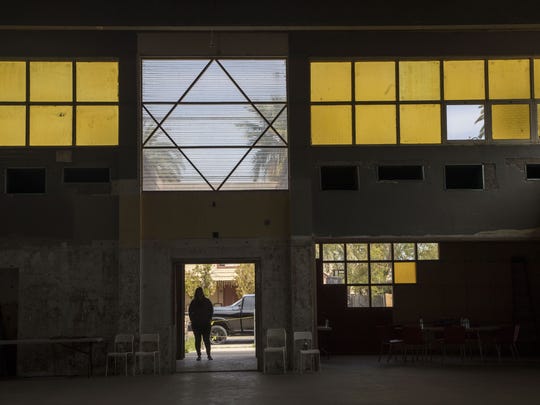Rescue, Resilience and Renewal. Thestory of Beth Hebrew, Phoenix
The Beth Hebrew is a mid-century synagogue currently located in downtown Phoenix. It was the first Orthodox synagogue in Phoenix when it was established in the 1950s, and it later became home to a Latino Pentecostal Church and an African-American Theater.
The extensive and diverse history of the building in its urban context is at the forefront of this interdisciplinary project. The project is spearheaded by Dr. Volker Benkert, Assistant Professor of History, Dr. Jason Bruner, Assistant Professor of Religious Studies, Dr. Keith McHugh, Associate Professor in the School of Geographical Sciences and Urban Planning, Dr. David Pijawka, Professor at the School of Geographical Sciences and Urban Planning, Dr. Sharon Smith, Head of Distinctive Collections at ASU Library, Dr. Mark Tebeau, Associate Professor of History, Dr. Hava Tirosh-Samuelson, Professor and Director of Jewish Studies, and ASU graduate students Marc Vance and Kelly Bitler.
“What we’re trying to do is to tell the story. And we’ve teamed up with geographers who can speak to this place and the larger Phoenix landscape. We (also) have a scholar in religious studies who is helping us (to) understand Latino Pentecostalism and to develop (…) why is it that this group turns away from Catholicism (…). There are also Jewish studies scholars, of course, who can think of Jewish life in Phoenix, (and) Holocaust scholars like me”, Benkert explained.
The synagogue grew out of a group of Orthodox Eastern European Jews, who had come to the Valley of the Sun in the beginning of the 20th century, and postwar newcomers such as the Loewy family. The Loewys occupy a prominent place in our work, since this remarkable family managed to rescue 1,500 Jews and non-Jews from a Vichy camp during World War II. Later, they actively fought in the French resistance trained with the help of Captain Aaron Bank, an American officer parachuted into southern France in preparation for the Allied landing in 1944. Aaron Bank later founded the Green Berets.
“It’s amazing and a somewhat overlooked story, because we focus a lot on righteous gentiles, non-Jews who saved Jews. All glory to them, that’s important, but because of that focus there’s much less of an understanding of Jews rescuing Jews. So, this family managed to free themselves and others which is remarkable,” Benkert explained.
For 22 years, the building remained in the hands of the Jewish community. In 1977, however, the community moved out to the suburbs following the lure of affordable and larger housing.
“So, (the Jewish community) moves out, and the community that moves in is a Mexican-American Pentecostal Church. And that’s important for a number of reasons. They literally break through the segregation line (in Phoenix), they move north of the railway tracks,” Benkert said.
The second reason for their importance is the community is based around a Pentecostal Church and not a Catholic one. The congregants were all raised Catholic, but suddenly made the change to Pentecostalism during this time period, according to Benkert.
The Mexican American Pentecostal Church occupied the building from 1977 until 1983, when it was taken up by the Black Theatre Troupe. The troupe was founded by Helen K. Mason to give a voice to African-Americans in Phoenix who were subject to the same discriminatory practices in education, housing, and employment as Latinos. Bringing their stories to audiences in Phoenix was also a response of reconciliation in view of racist violence across the country in the 1970s and 1980s.
“The idea was to form a theater as an outlet for cultural activity but also to bring African-American stories to a larger audience.” Benkert said.
After a fire damaged the building in 2001, the theater group relocated to a new building also in Phoenix. Beth Hebrew was not occupied by any group or community organization for years.
“It had some street credit, because it was literally covered with graffiti. But not destroyed, it wasn’t taken down. (…) It was really this street art thing,” Benkert commented.
After the financial crisis of 2008 passed, Michael Levine, a real estate developer with an eye for restoration rescued the building. Given the fast-paced Phoenix real estate market, “it is very clear that if he had not bought it, it would be gone,” Benkert said.
The project offers a host of research evenues, but as a digital humanities project, the project team also tries to make these stories available through a digital archive housed at ASU Library.
“The beauty is to think about these many stories that are in this building and to think about, what is it about this place that so many different groups called it home and that there are so many stories that we can tell about these diverse groups,” Benkert said.

